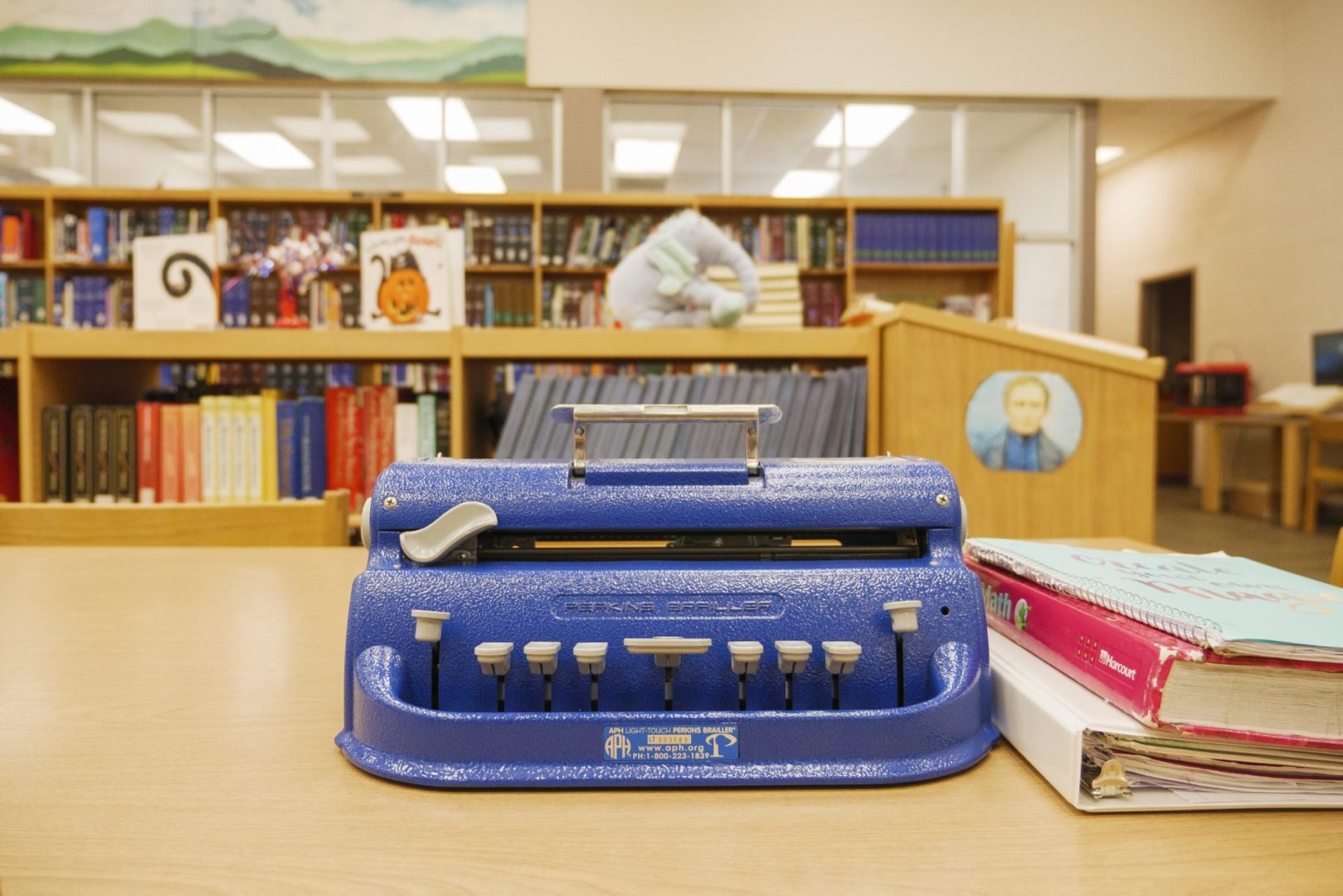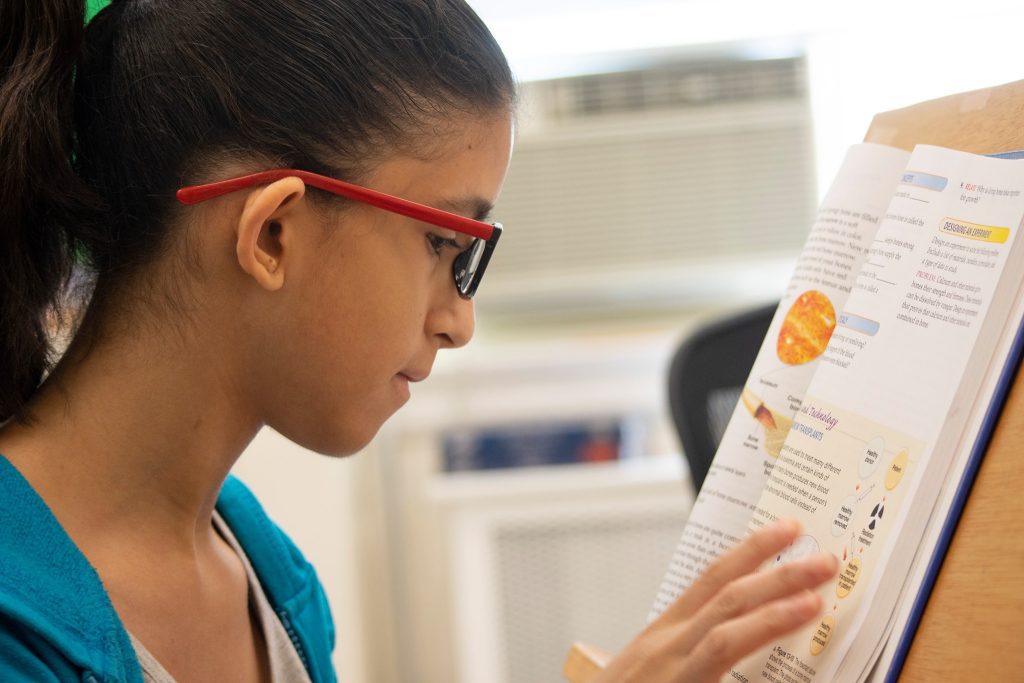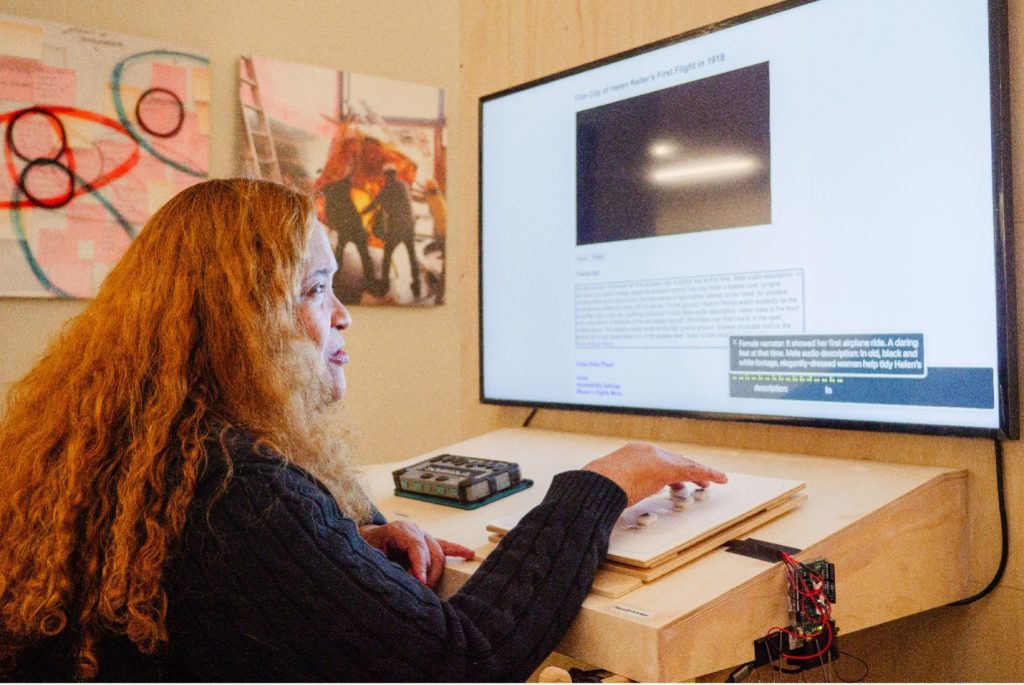Orders placed between March 27 – 31 will not ship until April 1 due to APH warehouse closure for inventory.
CloseUsing Poetry to Build Braille Literacy

National Poetry Month in April is an opportunity for everyone to create and marvel at the beauty of poetry. Not only is poetry a requirement within the Common Core Standards, but it is also an excellent way to incorporate many lessons on braille contractions and formatting rules. Participate in the following poetry lesson to learn how to write your own poem using an APH Light-Touch Perkins Brailler.
What You’ll Learn
Poetry is used throughout education to learn and practice many types of writing and comprehension skills. Have you ever considered all the braille skills that can be used when reading and writing poetry? The different poetic styles allow the incorporation of braille contractions, proofreading, and braille format planning, as well as the official rules of Poetry and Song Formats. If you do not feel comfortable with poetry, do not stress! There are great resources, such as Poetry Writing Lessons for Kids and Introducing Students to Writing Poetry with Formula Poems, that give a great overview of the types of poems with examples. Many students using refreshable braille devices do not get the chance to read paper braille poems and experience the rhythm that comes with the formatting of poetry.
Materials
- APH Light-Touch Perkins Brailler
- Braille Paper
Objective
The student will use braille contractions to write a Rhyming Couplets poem.
Lesson
- Determine the contractions to be used in the lesson. For this example, I chose ENCE, ANCE, CH, and ST.
- Introduce Rhyming Couplets poetry. Rhyming Couplets are a two-lined stanza with a rhyme scheme following the AA BB CC pattern.
- Emboss and preview a page of Seuss’s Green Eggs and Ham text. Have the student notice the rhythm and rhyming. Ask the student to notice the line breaks and where they occur. Do they notice a pattern? Why do they think line breaks are important?
- Prewriting: Brainstorm a topic that is of high interest to the student. For this example, my student chose braille.
- Have the student write a list of at least 5 words with each contraction. For this lesson example, the student chose:
- Essence, sentence, presence, absence, difference
- Chance, distance, importance, brilliance, stance
- Past, last, start, strong, first
- Chance, catch, chart, batch, touch
- Drafting: Have the student braille basic sentences incorporating the brainstorming words.
- Revising: Ask the student to read aloud what they have written, and ask the following questions:
- How does it sound? Does it have rhythm?
- Does it make sense?
- Are there any spelling, punctuation, or braille errors?
- Editing: Have the student braille the poem on a fresh piece of paper.
- Publishing: Have your student share their work with teachers, friends, family and/or display their work in the classroom or hallway.
Below is my student’s final poem.
Braille: A Poem
Through tactile dots, a world grows clear
A code for the blind, we revere
Cells of six provide the essence
Of every letter and word in a sentence
In darkness or in light, all can read
Providing a chance for all to succeed
So let us honor braille’s rich past
And all who use it, from first to last
Read our Building Your Braille Literacy Toolkit blog to find related products.
Share this article.
Related articles

Louis and the AMP Database: Supporting Students and the Field
The Louis Database The concept of sharing information between braille-producing agencies dates back to the 1950s, when APH used a...

Creating Inclusive Museum Experiences: The Role of Media Integration in The Dot Experience
We recently had the opportunity to talk with Billy Boyd and Annie Schauer from Solid Light to learn more about...

Taking to the Skies: Making In-flight Entertainment More Accessible
When traveling by plane, it’s easy to point out in-flight features that are typically inaccessible to people who are blind...
